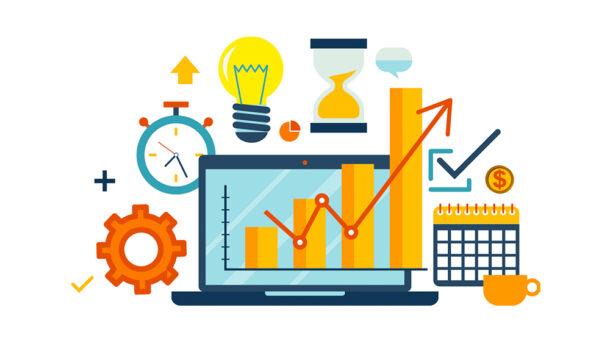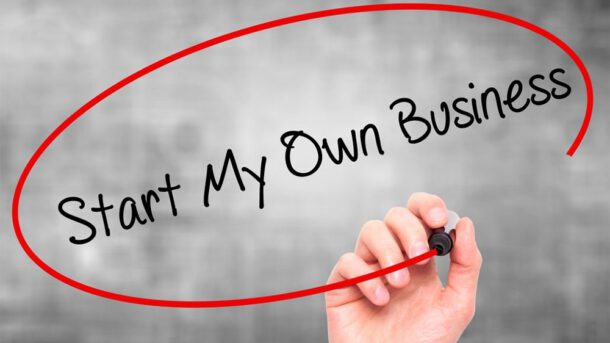In today’s digital age, having a strong online presence is crucial for the success of any small business. With the widespread use of the internet and the increasing reliance on online platforms, a website helps small businesses connect with their target audience, showcase their products or services, and establish their brand identity. In this article, we will explore why a website is important for small businesses, what websites are used for, the features of a good business website, the benefits for companies looking for a website, and the costs associated with launching and operating a website.
Why is a Website Important for Small Business?
A website helps small businesses in numerous ways, enabling them to compete in the digital marketplace and reach a wider audience. Let’s delve into some of the key reasons why a website is important for small businesses.
1. Website Helps Establish Online Presence
In the digital era, customers turn to the internet to search for products, services, and information. A website serves as the online face of a small business, allowing potential customers to discover and learn more about the business at any time. It provides a platform for showcasing offerings, sharing valuable content, and engaging with the target audience.
Without a website, a small business might miss out on significant opportunities to connect with customers and establish credibility in the digital landscape. A website acts as a central hub for all online activities and creates a strong foundation for digital marketing efforts.
2. Websites are Used for Various Purposes
Websites have evolved beyond being mere informational platforms. They serve a multitude of purposes that are essential for the growth and success of small businesses. Let’s explore some common uses of websites:
a) Showcasing Products and Services:
A website allows small businesses to display their products or services in an attractive and informative manner. High-quality images, detailed descriptions, and customer reviews can be incorporated to provide a compelling overview of what the business offers.
b) Providing Information:
A website serves as an information hub, providing essential details such as contact information, business hours, location, pricing, and frequently asked questions. By addressing potential customer queries upfront, a website reduces the need for manual inquiries and enhances the customer experience.
c) Generating Leads:
Small businesses can use their websites as lead generation tools by incorporating contact forms, subscription forms, or free resource downloads. These mechanisms enable businesses to capture potential customer information and nurture leads through email marketing or other communication channels.
d) E-commerce:
Websites play a crucial role in facilitating online sales for businesses that operate in the e-commerce space. With an e-commerce website, small businesses can offer a seamless shopping experience, complete with product catalogs, secure payment gateways, and order tracking systems.
e) Building Brand Awareness:
A website helps small businesses establish and strengthen their brand identity. By showcasing the business’s unique value proposition, mission, and brand story, a website cultivates brand loyalty and recognition among customers.
3. Features of a Good Business Website
To maximize the benefits of having a website, small businesses should focus on developing a good business website. A good website encompasses several key features that contribute to its effectiveness and user-friendliness. Here are some features of a good business website:
a) User-Friendly Navigation:
A good website should have intuitive navigation that enables users to find information easily. Clear menu structures, search functionality, and well-organized content help visitors navigate the website without confusion.
b) Responsive Design:
In the mobile-driven era, a good website is mobile-friendly and responsive. It adapts to different screen sizes and ensures a seamless user experience across devices, including smartphones, tablets, and desktop computers.
c) Engaging Visual Design:
A visually appealing website captures the attention of visitors and encourages them to explore further. A good website incorporates attractive images, videos, and graphics that align with the business’s branding and create a positive impression.
d) Clear Call-to-Action (CTA):
A good website guides visitors toward desired actions through strategically placed CTAs. Whether it’s making a purchase, contacting the business, or subscribing to a newsletter, well-designed CTAs prompt visitors to take the next step.
e) Relevant and Compelling Content:
A good website provides valuable and engaging content that aligns with the target audience’s needs and interests. This can include blog articles, videos, case studies, or product/service descriptions that educate and inform visitors.
4. Benefits for Companies Looking for a Website
Companies that invest in a website can reap several benefits that contribute to their overall growth and success. Here are some key advantages for companies looking to establish a website:
a) Increased Visibility:
A website improves a company’s online visibility by making it discoverable to a wider audience. Through search engine optimization (SEO) techniques and other digital marketing strategies, a website can rank higher in search engine results, attracting more organic traffic.
b) Expanded Market Reach:
With a website, companies can transcend geographical limitations and extend their market reach beyond local boundaries. By offering online purchasing options and shipping services, businesses can target customers from different cities, states, or even countries.
c) Enhanced Credibility:
A well-designed website enhances a company’s credibility and professionalism. It conveys a sense of trustworthiness, showcasing the business’s expertise, testimonials, awards, or certifications that establish its reputation in the industry.
d) Improved Customer Engagement:
A website allows companies to engage with customers more effectively. Through features such as contact forms, live chat, or social media integration, businesses can foster meaningful interactions, address inquiries promptly, and provide personalized customer support.
e) Competitive Advantage:
In a competitive marketplace, a website gives companies a competitive edge. It enables businesses to differentiate themselves from competitors, highlight their unique value propositions, and create a memorable brand experience that resonates with customers.
5. Cost of Launching and Operating a Website
While the benefits of having a website are significant, it’s important to consider the costs associated with launching and operating a website. The cost can vary depending on several factors, such as the complexity of the website, the desired features and functionalities, and whether you choose to build it in-house or hire professionals. Here are some cost considerations:
a) Website Development:
Developing a website can involve expenses such as web design, programming, content creation, and domain registration. It’s recommended to work with experienced web developers who can deliver a high-quality website tailored to your business’s specific needs.
b) Website Hosting:
Websites require hosting services to be accessible on the internet. Hosting costs depend on factors like website traffic, storage requirements, and additional features. Shared hosting, virtual private servers (VPS), or dedicated hosting options come with varying costs.
c) Ongoing Maintenance:
Websites need regular updates, security patches, and maintenance to ensure optimal performance. It’s essential to budget for ongoing maintenance costs, especially if you have dynamic content, e-commerce functionality, or frequent updates.
d) Marketing and Promotion:
Once the website is live, investing in digital marketing strategies is crucial for driving traffic and attracting customers. This can involve expenses such as search engine optimization, paid advertising campaigns, content creation, and social media management.
e) Analytics and Monitoring:
To track website performance and make informed decisions, investing in analytics tools and monitoring platforms is important. These tools allow you to gather insights on website traffic, user behavior, conversion rates, and other key metrics.
A website plays a vital role in the success of small businesses. It helps establish an online presence, serves various purposes, and offers numerous benefits. With a good business website, companies can enhance visibility, expand their market reach, build credibility, engage with customers, and gain a competitive advantage. While there are costs associated with launching and operating a website, the long-term benefits and return on investment make it a worthwhile endeavor for small businesses seeking growth and success in the digital landscape.
1. How does a website help small businesses?
A website helps small businesses establish an online presence, enabling them to showcase their products or services, engage with customers, and build credibility. It expands their market reach and provides a platform for marketing and promotion.
2. What are websites used for in the context of small businesses?
Websites are used for various purposes in the context of small businesses. They serve as platforms to showcase products/services, provide information, generate leads, facilitate e-commerce, and build brand awareness.
3. What are the features of a good business website?
A good business website possesses several key features, including user-friendly navigation, responsive design, engaging visual elements, a clear call-to-action (CTA), and relevant and compelling content. These features contribute to a positive user experience and help achieve business goals.
4. Why are companies looking for a website?
Companies are looking for a website to establish an online presence, increase visibility, expand their market reach, enhance credibility, improve customer engagement, and gain a competitive advantage. A website is seen as an essential tool in today’s digital landscape.
5. What is the cost of launching a website?
The cost of launching a website can vary depending on factors such as website complexity, desired features, and whether you choose to build it in-house or hire professionals. It includes expenses for web development, design, content creation, and domain registration.
6. How much does it cost to operate a website?
The cost of operating a website includes expenses for hosting services, ongoing maintenance, marketing and promotion, analytics and monitoring tools, and any additional features or functionalities. The exact cost can vary based on the specific requirements and scale of the website.












